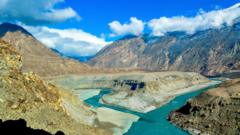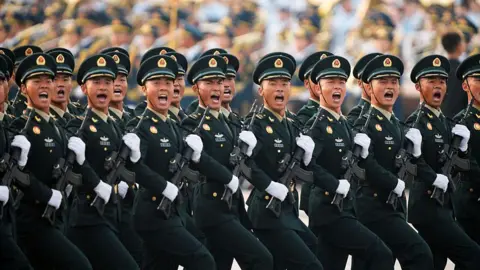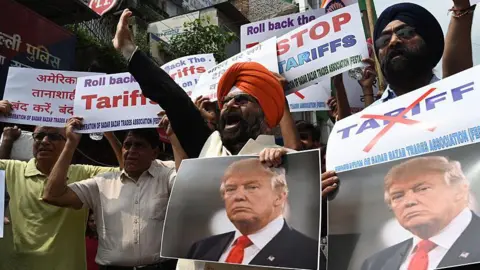The Indus river, a vital water source for both India and Pakistan, has become the center of escalating tensions following India's suspension of the 1960 Indus Waters Treaty (IWT). This treaty has historically governed the distribution of water from the river and its tributaries, facilitating cooperation even amid conflicts. The suspension comes after an attack in Indian-administered Kashmir, with India accusing Pakistan of harboring terrorism - a claim Pakistan denies.
With the suspension, questions arise regarding India's ability to modify water flow. The IWT allocates the three eastern rivers – the Ravi, Beas, and Sutlej – to India, while Pakistan has rights to the western rivers – the Indus, Jhelum, and Chenab. Although India has been exploring enhancements to its water infrastructure, experts argue that physically stopping vast water flows is unrealistic given current capabilities. India's limited storage infrastructure, mainly focused on run-of-the-river hydropower plants, cannot feasibly divert significant water volumes.
Historically basing their governance on the IWT, the recent decision marks a significant shift, especially since this is the first time such a suspension has occurred. The underlying tensions have prompted experts to consider potential modifications to existing infrastructure, enabling India to manage rivers more independently. This could have dire implications for Pakistan, particularly during the dry season, stressing existing water shortages.
Moreover, its ability to share hydrological data with Pakistan - essential for agriculture and flood regulation - is now compromised, exacerbating the situation. While India may not be able to weaponize water directly, it does hold the option to manipulate its reservoir levels in ways that could impact Pakistan negatively.
The broader geopolitical context further complicates matters. China's ongoing projects in Tibet, which impact rivers leading to India, add layers of complexity to regional water dynamics. With each nation eyeing the potential for water control amid escalating political tension, the consequences for millions relying on the Indus river system remain uncertain. As the potential for conflict grows, the very fabric of water diplomacy in South Asia is being tested like never before.
With the suspension, questions arise regarding India's ability to modify water flow. The IWT allocates the three eastern rivers – the Ravi, Beas, and Sutlej – to India, while Pakistan has rights to the western rivers – the Indus, Jhelum, and Chenab. Although India has been exploring enhancements to its water infrastructure, experts argue that physically stopping vast water flows is unrealistic given current capabilities. India's limited storage infrastructure, mainly focused on run-of-the-river hydropower plants, cannot feasibly divert significant water volumes.
Historically basing their governance on the IWT, the recent decision marks a significant shift, especially since this is the first time such a suspension has occurred. The underlying tensions have prompted experts to consider potential modifications to existing infrastructure, enabling India to manage rivers more independently. This could have dire implications for Pakistan, particularly during the dry season, stressing existing water shortages.
Moreover, its ability to share hydrological data with Pakistan - essential for agriculture and flood regulation - is now compromised, exacerbating the situation. While India may not be able to weaponize water directly, it does hold the option to manipulate its reservoir levels in ways that could impact Pakistan negatively.
The broader geopolitical context further complicates matters. China's ongoing projects in Tibet, which impact rivers leading to India, add layers of complexity to regional water dynamics. With each nation eyeing the potential for water control amid escalating political tension, the consequences for millions relying on the Indus river system remain uncertain. As the potential for conflict grows, the very fabric of water diplomacy in South Asia is being tested like never before.




















